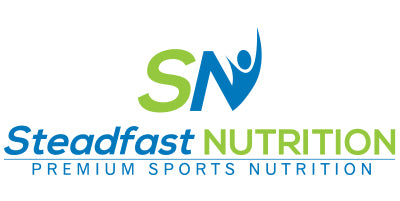Flavonoids are plant compounds naturally present in fruits, vegetables, flowers, bark, stem, root, wine, tea, cocoa and grains. They are popular because of their excellent antioxidant, anti-inflammatory and anti-cancer properties.
Due to their potential health benefits, these days flavonoids are extracted from their natural sources and used in various medicines, diet and health supplements, cosmetics and other nutraceutical products.
Flavonoids which are specifically found in foods are referred to as dietary flavonoids. Before discussing their health benefits, let us understand the classification of flavonoids. All these classes differ based on their structures and sources.
1. FLAVONES - Flavones are primarily found in fruits, flowers and leaves examples luteolin, apigenin and tangeritin. Major sources of these flavones are Ginkgo Biloba, chamomile, mint, celery, parsley and bell peppers. Citrus fruit peels are also rich sources of flavones like nobiletin, sinensetin and tageretin.
2. FLAVONOLS - Some of the common flavonols are myricetin, quercetin, kaempferol and fisetin. These flavonols have the potential to fight free radicals and keep our blood vessels healthy. They are required for the synthesis of anthocyanins. Foods rich in flavonols are berries, lettuce, apples, tomatoes, onion, spices and grapes.
3. FLAVANONES - Another class found in citrus fruits like orange, grapefruit and lemon which accounts for the bitter taste of their peels. Examples are naringenin, eriodictyol and hesperidin. Similar to flavonols, flavanones also have the capability to function as antioxidants, they counter inflammation, prevent blood cholesterol and sugar levels from rising.
4. ISOFLAVONOIDS - Isoflavonoids are also regarded as phytoestrogens and found in soybean, fats, oils and legumes. They are believed to mimic the activity of the oestrogen hormone in the body and can tackle several diseases.
5. NEOFLAVONOIDS - These polyphenolic compounds are found in the bark and timber.
6. FLAVANOLS - Also referred to as catechins, flavanols are plentiful in green tea, berries, peaches and bananas.
7. ANTHOCYANINS - This flavonoids category is responsible for the vibrant and beautiful colours of flowers, fruits and plants. This is because they are pigments and abundantly present in all berries and grapes. Some of the examples are delphinidin, cyanidin and peonidin.
8. CHALCONES - Chalcones like arbutin, phloretin and chalconaringenin are present in strawberries, pears and some wheat products.
It is amazing to see that flavonoids are abundantly found in so many products which we consume in our daily life. They are an inevitable part of the foods we eat. Most of the flavonoids are excellent antioxidants which make fruits and vegetables secure way to get antioxidants in the diet. They fight free radicals, oxidative stress, toxins, chemicals and other harmful pathogens which may damage our healthy cells. Suppressing inflammation is another reason to choose flavonoids in the diet. Chronic inflammation is associated with many diseases hence these are essential to diminish the incidence of cancers, tumour formation and diabetes.
V. Garcia et al conducted a study in 2005 to evaluate the benefit of flavonoids on asthma patients. Researchers gave apples to asthma and COPD patients and at the end of the study, they concluded that flavonoids present in apples have a protective effect on chronic lung disease and reduce asthma severity.
In addition, some studies also noticed a remarkable improvement in blood cholesterol and glucose levels hence good for diminishing the likelihood of heart diseases, stroke and diabetes.
To sum up, flavonoids are plant-based nutrients found in a variety of fruits, vegetables and other foods in multiple forms. They are believed to act as powerful antioxidants in the body. Flavonoids are also effective against inflammation, tumour formation, oxidative stress and elevated blood sugar levels. Hence, our diet should aim to include plenty of these to improve our health and overall well-being.
REFERENCES
- Panche, A. N., Diwan, A. D., & Chandra, S. R. (2016). Flavonoids: an overview. Journal of nutritional science, 5, e47. https://doi.org/10.1017/jns.2016.41
- Chae, S. C., Lee, J. H., & Park, S. U. (2013). Recent studies on flavonoids and their antioxidant activities. EXCLI journal, 12, 226–230.
- V. Garcia, I. C. W. Arts, J. A. C. Sterne, R. L. Thompson, S. O. Shaheen.(2005). Dietary intake of flavonoids and asthma in adults European Respiratory Journal. 26: 449-452; DOI: 10.1183/09031936.05.00142104.
- Mozaffarian, Dariush., & H.Y. Wu., Jason. (2018).Flavonoids, Dairy Foods, and Cardiovascular and Metabolic Health.A Review of Emerging Biologic Pathways.122,369–384
- Hui, Chang. et al.(2013).Flavonoids, Flavonoid Subclasses and Breast Cancer Risk: A Meta-Analysis of Epidemiologic Studies.Plos One. https://doi.org/10.1371/journal.pone.0054318


